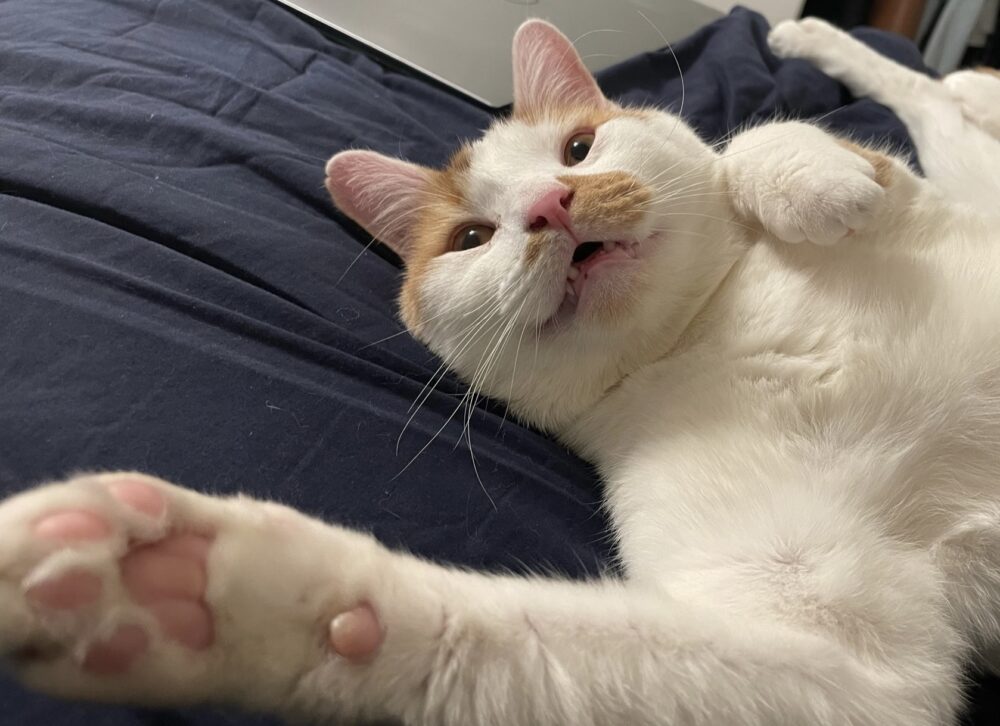Popular culture has birthed an archetype of the crazy cat lady: a middle-aged woman with more cats than people in her life, unable to properly care for them and her home. Seen as both offensive and humorously affectionate, this often disheveled or reclusive image has brought into question the legitimacy of these behavioral patterns. As science intervened, news stories of “crazy cat lady syndrome” became used to refer to links between a parasite, psychiatric disorders, and behavioral changes in humans. Could they reveal the truth about this long-held stereotype?
The Centers for Disease Control and Prevention considers toxoplasmosis, a disease resulting from T. gondii infection, as “one of five neglected parasitic infections of people.”
The single-celled parasite Toxoplasma gondii (T. gondii) is one of the world’s most common parasites, infecting warm-blooded animals including humans and cats. T. gondii does not usually impact healthy adults unless immunodeficiency or pregnancy is involved. Still, the Centers for Disease Control and Prevention considers toxoplasmosis, a disease resulting from T. gondii infection, as “one of five neglected parasitic infections of people,” with more than an estimated 60 million in the U.S.
According to the Cornell Feline Health Center, T. gondii cycles through definitive hosts, where the parasite reproduces and forms eggs (oocysts); and intermediate hosts, where it clones itself. These clones cluster inside cysts, or sac-like pockets of membranous tissue. Notably, felines are the only definitive hosts for T. gondii, becoming key in their life cycle. Upon a cat’s ingestion of contaminated raw meat, the parasite is released from the meat’s cysts into the cat’s digestive tract, where it produces millions of oocysts. Eggs are shed through feces as early as three days after consumption with the ability to survive for over a year in their environment. Some of the T. gondii released can penetrate the host’s intestinal wall and multiply as a tachyzoite, a faster-growing form, after which they take the dormant bradyzoite form, a slower-growing parasite found in tissue cysts of muscle and central nervous system cells. In Foodborne Parasites in the Food Supply Web, researchers write that this form allows T. gondii to maintain its infection until eaten by their next host.
For someone with many cats, their likelihood of exposure is greater than that of an average cat owner, which could be the speculated cause of the “crazy cat lady” stereotype.
Humans and other animals are intermediate hosts of T. gondii, becoming infected by eating cysts or oocysts. T. gondii most often calls a human “home” when one consumes undercooked contaminated meat or is exposed to infected cat feces. This is much more likely in an unkempt home overwhelmed with cats, especially if they roam outdoors. Within a few days, contact with areas like litter boxes or gardens may lead to ingestion of infectious oocysts, leading to the creation of further cysts within the host’s body. These cysts become permanent residents in intermediate hosts and are infectious to cats, people, and other intermediate hosts consuming the tissue. For someone with many cats, their likelihood of exposure is greater than that of an average cat owner, which could be the speculated cause of the “crazy cat lady” stereotype.
This stereotype may originate from the behavioral changes Toxoplasmosis has been observed to produce in rats, especially since parasites can also affect human brains. In 2000, researchers at the University of Oxford suggested T. gondii manipulated rats’ perception of risk in the face of predators, sometimes even turning this instinctive avoidance into attraction. Infected rats in the study became drawn to the smell of cat urine, compromising their safety but likely allowing T. gondii to continue reproducing in its definitive host when inevitably eaten by a cat. However, a more recent study published in 2020 analyzed T. gondii-induced changes in mice and provided evidence that the parasite “lowers general anxiety in infected mice, increases explorative behaviors, and surprisingly alters predator aversion without selectivity toward felids,” defying the idea that they only lose fear to cats.
Science is ultimately hesitant to call T. gondii the reason for “crazy cat ladies.”
Since the release of the first study linking human behavior to Toxoplasmosis in 1994, over 200 papers have been published on the topic, producing results as heterogeneous as those of rodent behavior studies. As a 2020 literature review reflects, T. gondii is unique for its ability to cause “long-term latent infection in the [central nervous system] of humans and rodents.” With many study differences and limitations, underlying mechanisms of the T. gondii infection are still unclear. This review concludes that “if T. gondii influences human behavior or disease, the effect is likely subtle” and that genetic background plays a role, opening potential markers for those at higher risk of behavior change. Despite this parasite’s invasive nature, science is ultimately hesitant to call T. gondii the reason for “crazy cat ladies.”
Cell Reports (2019). DOI: 10.1016/j.celrep.2019.12.019
mBio (2020). DOI: 10.1128/mBio.02164-19
Proceedings of the Royal Society B: Biological Sciences (2000). DOI: 10.1098/rspb.2000.1182



